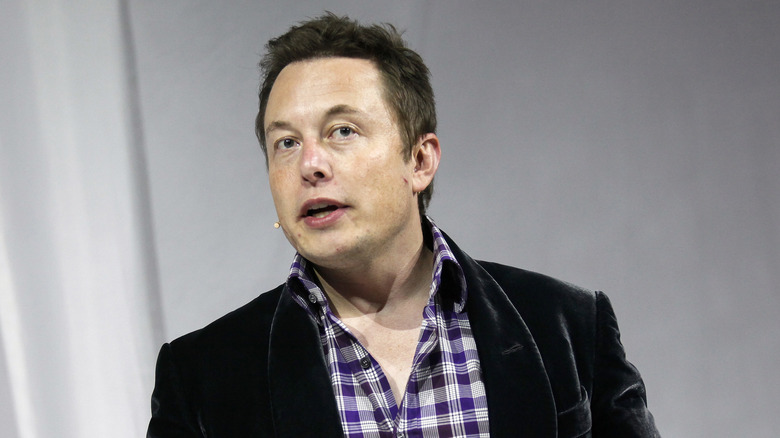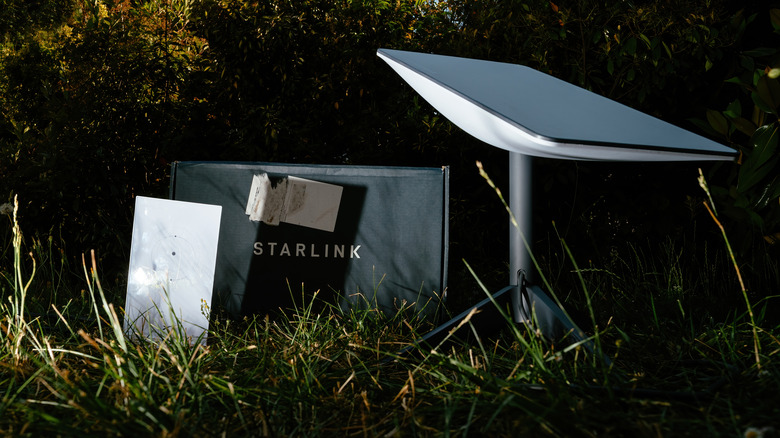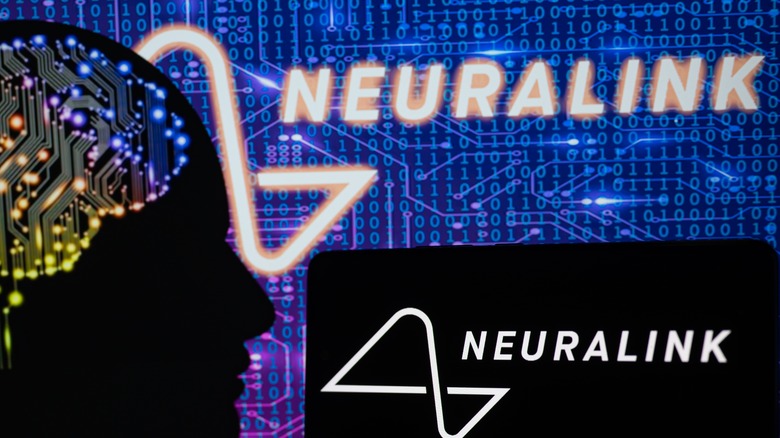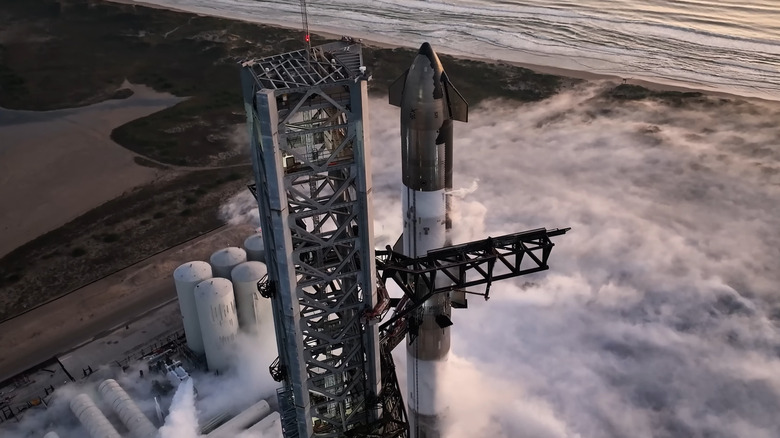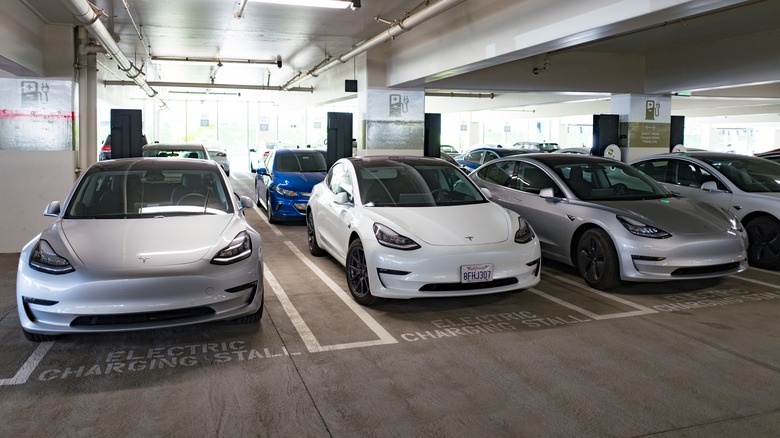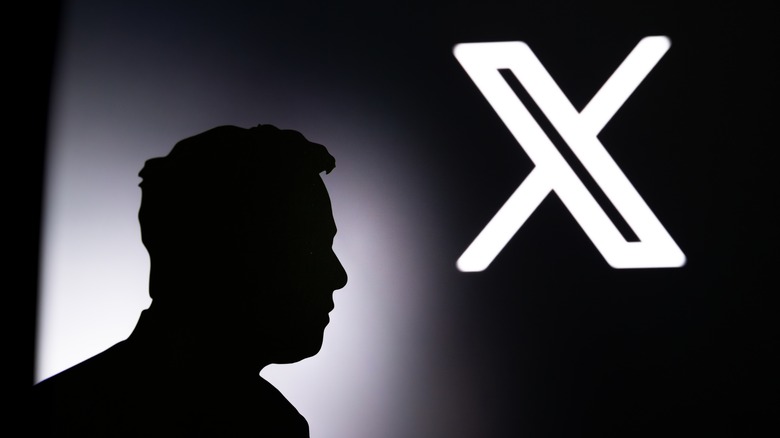Elon Musk's 5 Coolest Tech Inventions So Far
Is Elon Musk, himself, an inventor? It's doubtful he's down there in the control room at SpaceX offering his help with complex physics equations. What he is best known for is overseeing ambitious projects and getting them off the ground.
On his path to becoming the richest man on the planet, he has completely altered the trajectory of multiple tech companies. As a CEO, he has made substantial macro decisions, like when he laid off more than half of the Twitter workforce after taking over the company.
That said, he does have some technical and design knowledge that has aided in his company's projects. Famously, he led the team that designed the Tesla Roadster, a car that would propel the EV company into the spotlight. But that's not all of the inventions Musk has under his belt. Some of his inventions have already altered the world at large, while others can potentially alter our place in the universe.
Starlink internet
Starlink is a service that connects users to the internet by routing them through small satellites in low earth orbit. This forgoes the need for a traditional cable connection. Its 5,500 satellites provide internet to over 60 countries, with more planned to take to the stars.
This service, developed by SpaceX, has changed the lives of many people since it launched in 2019. Not everyone has access to ground infrastructure. For example, rural areas can have limited or no internet connectivity options. But with a Starlink dish and data plan, those in select rural areas can get internet connectivity no matter how far away from civilization they are.
It has also become a useful tool for providing internet access to moving vehicles. The Tesla team even used Starlink to livestream their Cybertruck road trip to the Pacific Ocean.
Not only has the service been used by everyday consumers, but it has also proved essential to Ukraine following the Russian invasion. After Russia shut down all other services to Ukraine, Starlink became the Ukrainian army's primary source of communication. This continues to be the case, even after some controversial moves by Musk about the service's use in the conflict.
Although Starlink isn't the only satellite internet service, with its rapid growth and promise of 42,000 in the future, it has a lot of potential. The company also has plans to launch a Starlink satellite phone service somewhere down the line.
Neuralink
Founded by Musk in 2016, Neuralink is a neurotechnology company for developing brain–computer interface (BCI) tech. The technology aims to connect the brain to external devices by exporting information exuded by neuron activity via probes inserted in the brain. These probes are implanted in the brain via robotic surgery.
Although this may sound like a potentially destructive piece of tech from a sci-fi movie, the technology has the potential to help many people. This is because the neurons in the brain are wired to muscles. For those with paralysis, these pathways are damaged. Neuralink could bridge the gap, letting users control robotic arms, for example, using their minds. It could also treat brain diseases, including epilepsy and dementia.
One of the famous live showings of the Neuralink was when an implanted pig took the stage while the data collected by the device could predict the position of the animal's joints based on its neural activity. Although quite impressive to the general audience, the entire Neuralink project has been met with criticism. Thiago Arzua of the Medical College of Wisconsin argued that this technology has existed for at least 50 years. Some have cited the event where an individual who was paralyzed from the chest down, with the aid of neuron readings, shook hands with Barack Obama back in 2016 as an example of the tech already existing. That said, Neuralink is still moving forward and was recently approved for human testing.
SpaceX Starship
The Starship is a spacecraft with great potential developed by Musk's SpaceX company. It comprises two parts: a Super Heavy rocket and a spacecraft. The rocket is powered by 33 Raptor engines using sub-cooled liquid methane and liquid oxygen. The spaceship is designed to carry crew and cargo. It can carry up to 150 metric tons of reusable and 250 tons of expendable weight.
What makes the Starship stand out is that it is reusable. The booster re-enters Earth's atmosphere after detachment and can land back on the launch site. Theoretically, you could go anywhere in the world in one hour or less without buying a new rocket each time. But that's not what it is built for.
The Starship is designed to carry up to 100 people to destinations inside our galaxy, including Mars. It is also expected to aid in developing a moon base for future missions to the rock. Additionally, it can transport satellites, such as Starlink, into space.
The second Starship test flight happened just last month. Although there was a hiccup with the Super Heavy booster where it exploded after separation, SpaceX called the test flight a "success." In the long run, the Starship has the potential to change space travel and potentially take us deep into the stars.
Tesla EVs
Elon Musk was an early investor in Tesla back in 2005. Tesla first popped up during a time when EVs seemed impractical. The company started with high-performance cars to fund the development and drum up attention for an affordable line of EVs.
Musk eventually became CEO in 2008 and enacted many changes that effectively saved the company from bankruptcy. Tesla remains profitable thanks to its Gigafactories, which manufacture lithium-ion batteries for vehicles. Tesla's robotics for car manufacturing also keep costs down, allowing the company to make its vehicles more affordable.
Tesla vehicles aren't just traditional gas-powered vehicles with their engines swapped out. The Models S, 3, X, Y & R, and now the Cybertruck have brought substantial innovations with them. For example, Tesla is at the forefront of self-driving technology, having introduced over-the-air updates for vehicles. Additionally, the company developed the North American Charging Standard (NACS), which was later released by the company and made the standard for all EV charging in the United States moving forward.
Tesla changed the world's perception of EVs, resulting in other companies following suit. This allowed many motor companies to make great strides in becoming carbon-neutral.
X.com
X.com was originally an online bank created by Elon Musk and three others in 1999. The bank uniquely did not have overdraft fees, and it had referral rewards to get new customers to sign up. Most importantly, users could send money with just the recipient's email.
This service was no doubt ahead of its time. In an interview with CBS MarketWatch in 1999, Musk famously said, "People are ready to use the Internet as their main financial repository." Flash forward to now, and that is the case for most people. But if it was so ahead of its time, where is it?
Just one year after its inception, X.com merged with the software company Cofinity, and Musk was appointed CEO. Cofinity notably had a payment system called PayPal. In 2000, Musk was voted out of this CEO position, and a year later, X.com was renamed to PayPal, a name it still holds today. The company is still thriving, raking in billions annually.
Musk's obsession with the X.com domain didn't end there, however. The domain controversially replaced Twitter.com after Musk took over the social media company. Although he may have tanked Twitter, at least he got to revive X.com in some way.
